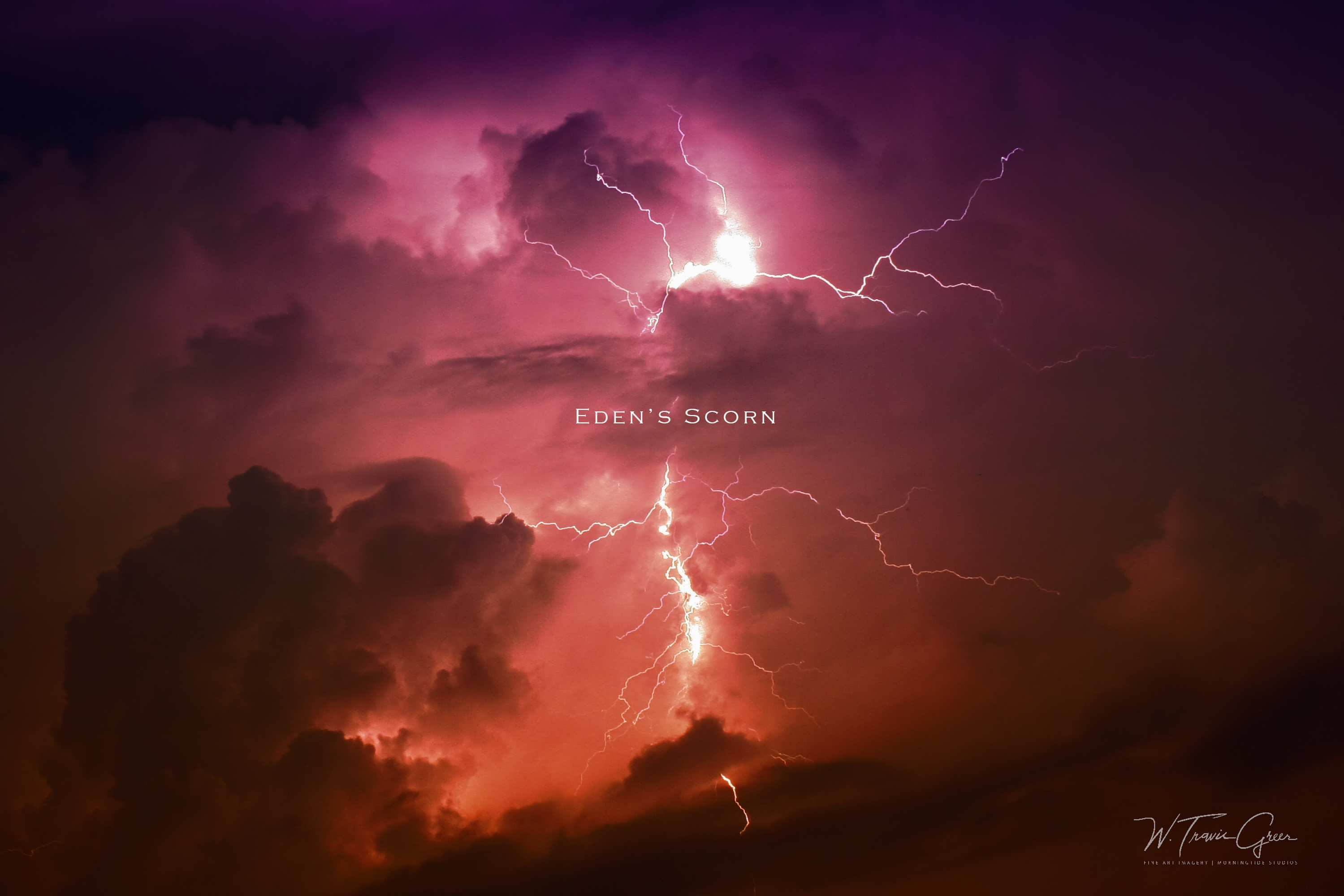“Passion is what drives and compels me to capture photos and tell a story in compelling, innovative, and emotive ways,” says Travis Greer of Kentucky. During an emotionally turbulent time in his life, he shot a series of lighting photos which he then made into a definitive compilation. Planning and shooting these lightning photos was therapeutic and helped him overcome some lonely times, and it made him a stronger person.
Want to get your work featured? Here’s how to do it!
Our inner demons and emotions are showcased in the work we do and the art we create. Whether this is intentional or subconscious, it still shows up one way or another. Battling some of his darkest emotions, Travis Greer weathered his personal storms by photographing real ones. He gives some pretty good tips on how to capture lightning streaks in our interview with him.
The Essential Photo Gear Used by Travis Greer
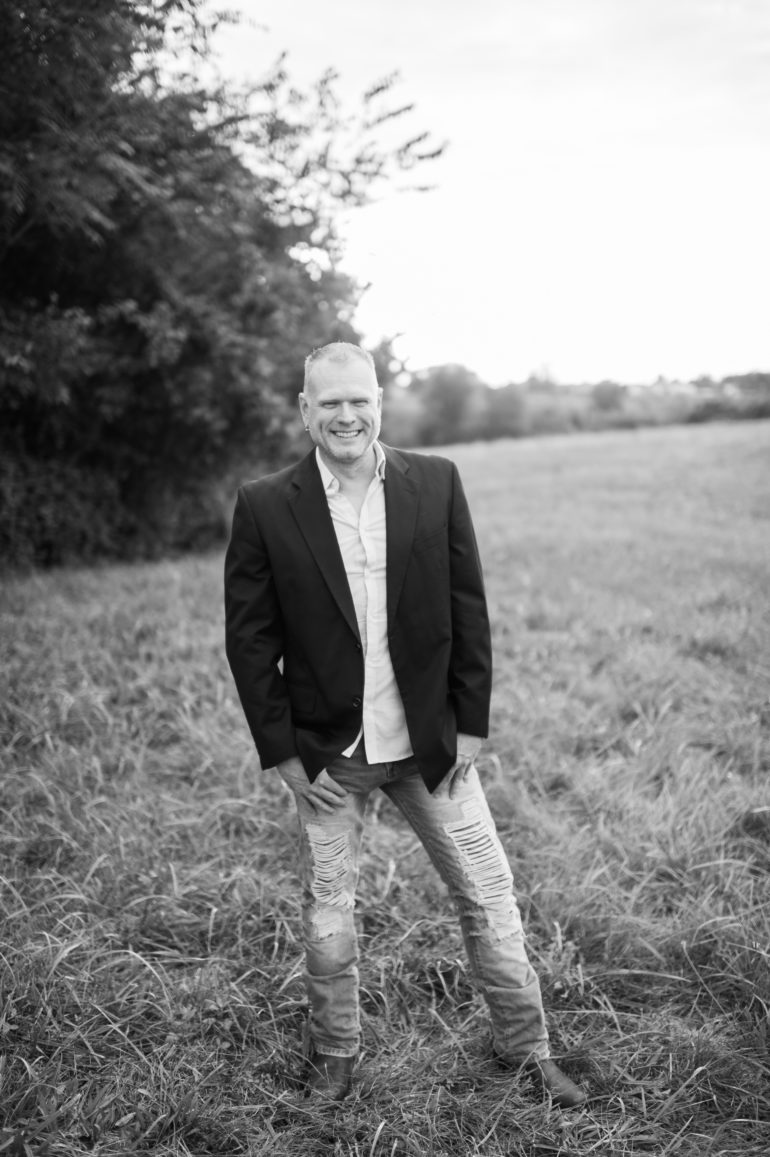
Travis told us:
- Canon 5D Mk II
- Canon 50mm f1.8
- Canon 70-200 mm IS II USM
- Canon EF 100mm f2.8L Macro IS USM
- Tamron 10-24mm f3.5-4.5
- Canon EF 85mm
Canon is my gear of choice, and after purchasing the 5D Mk II, it allowed another level of professionalism to my shots. Adding lenses such as the nifty 50 (50 mm), the 70-200 mm IS II USM (the workhorse for all my event photography shoots), and the 100 mm macro lens (my go-to for awkward, upside-down angles when I’m laying flat to snag those macro shots), these lenses became my top three lenses for the past 13 years. I’ve used many different lenses over the years, from the 85 mm prime (for my portrait sessions), the 10-24 mm wide (used for my real estate shoots); I will always go back to my simple 50 mm and my 70-200 mm. I get what I need, run-and-gun, and into the post-process, I go.
As for post-processing, I’ve always used Adobe software. From the early years to today’s Creative Suite, Adobe has always proven to have the most efficient and flexible tools to satisfy my style and workflow. From file management to exporting final products, EVERYTHING comes out of Lightroom. Lightroom streamlines an efficient workflow, especially for event photography. When I’m pushing over 1000 photos for clients, batching these could not be more simplified, from editing to exporting. For more detailed edits, I’ll always export to Photoshop, make my edits, and then push back to Lightroom for the final export, keeping everything nice and organized. Shooting for over 20 years, keeping track of libraries is a challenge, but Lightroom helps keep things in order.
The Phoblographer: Please tell us about yourself and how you got into photography.
Travis Greer: Hi, I’m Travis Greer and have been in marketing and advertising for 24 years. I started my career path in 1997 with the cliched position in the “mailroom”, in this case, “Member Services” at a local health insurance company in Louisville, Kentucky, then transitioned into the marketing department in 2000. But my passion for art started at a very early age, as early as Kindergarten, making paper sculptures with stick glue, to color pencil drawings in elementary school, and oil paintings in high school. In my early 20’s, I thoroughly enjoyed 3D artwork in applications such as Bryce and Poser, which taught me EVERYTHING about lighting, which truly led me in the direction on how to efficiently be a light-chaser in photography—a very natural progression.
However, I’ve always had an affinity to shoot photographs at an early age. But growing up, I could never afford to invest in the camera gear and always looked at those dials in complete reverie, as if it were a puzzle waiting for it to unlock a vault to vast fortunes untold within—the innocence of a child’s perspective. As aforementioned, and as the years progressed, I started a career path in marketing and advertising around 2001, which truly opened a few doors and many more opportunities to pursue my photography passions. My director at the time asked if I would snag some event shots for a holiday event our company sponsored for low-income families. She handed me an Olympus Camedia E-10 4.0 Megapixel camera with a 1 GB card (which I still have in my possession) and a laptop. She then sent me on my way to the three different locations In Louisville, Kentucky, where the events were held that day. Captured moments from those events, where less fortunate families were not going to have a Christmas were it not for this sponsored event, were priceless. From that day forward, I was hooked. A year or so later, I purchased my first camera, the Canon Rebel XT, from eBay, which was a kit set that came with three lenses—a very typical kit with cleaners, caps, case, etc., that you could purchase back then. I believe for the whole set I paid about $1500.00. From that day into my first year owning the gear, I made a promise to myself that I would not invest in another piece of equipment until I became adept at using the tool and solidify my passion to shoot and would need to shoot daily—a worthy goal and an effective one. As most mentors, I would come across over the years would say: aspiring photographers should shoot daily, with different lighting challenges, settings, environments, and subject matter. These were the days before social media where you could turn to any platform to get some sort of “tip-of-the-day”, much less by the hour, minute, or second—source material today is quite limitless. Nonetheless, perusing websites where the material was limited, I learned the trade and taught myself everything I could learn.
As I continued to shoot events for our marketing department, I would go home and shoot a wide range of subjects, but my two favorite subjects were macro photography and lightning photography. As I promised myself after year one, I purchased more gear, macro lenses and wide angles to help capture the subjects I was most passionate about.
The Phoblographer: How did the idea for this project come about? What inspired it, and what is the story behind the name?
Travis Greer: On August 28th, 2006, I shot my first long-exposure photo of a lightning strike, which to this day remains my personal favorite, that I entitled “Eden’s Scorn”. It was this shot that amplified my passion for lightning photography. Over the years, and hundreds of lightning photos later, I decided to pull together a photo series of my favorites and fan favorites that I entitled, “…In A Bottle.” The term to “catch lightning in a bottle” derived from Benjamin Franklin’s experiment with his kite to capture lightning. The phrase has evolved over the years to describe a difficult or challenging feat. So, the process of capturing a photo of a stroke of light that is traveling approximately 270,000 mph is, for the most part, seemingly impossible. But for anyone that knows how to shoot lightning, it’s quite easy and is more about being in the right place at the right time. So, my inspiration for the title was truly to invoke a sense of mystery, to capture lightning in a photo that is seemingly impossible, a difficult feat, and to evoke a sense of awe and wonder at the power and majesty from a stream of light that comes from an intense storm. Everyone has some type of feeling that comes from storms, not so much from the lightning itself, but the boom thereafter. Many I’ve spoken to who have viewed my lightning photos can internalize the shot, feel the boom resonate inside themselves thereafter, again, evoking a feeling of either fear, wonder, or awe at its power.

The Phoblographer: Are there any safety precautions that you need to take when taking pictures in such storms?
Travis Greer: I’d ask the same question for any photojournalist in a war-torn region. Do I recommend an umbrella to protect your gear from long-exposure shots? Yes, but it’s not the safest thing to do. Lightning can travel many miles from the storm, and it can reach you, your gear, especially the tripod. Your gear is positioned on the ground, which in essence can be a lightning rod in its own right. If I were to provide guidance on any safety precautions, a photographer should consider is: don’t shoot on a hill or under a tree, and use a remote trigger so you can stand a distance away from your gear. There’s new gear that can trigger your camera right before a lightning strike, but admittedly, I’ve not used it, nor can provide much guidance on its success. All in all, use common sense and ensure that you are in a safe area to get the shot. It’s exhilarating to be near a storm and watch the lightning streak across the sky. It’s quite electrifying to be standing near a bolt that strikes a tree…pun intended.
The Phoblographer: Are there particular emotions or moods that inspire the colours in these images?
Travis Greer: During the time frame when I shot those photos, the colors reflected different moods and emotions I was going through. I was in the depths of a flurry of different life changes and challenges, emotionally and spiritually, and the imagery and the post-process was my form of therapy to tell small portions of my story through the imagery. The dark shades of blues, purples, reds, and oranges imbued through different gradients, as well as high contrasts and highlights within the clouds, evoked a sense of good versus evil, a battle between heaven and earth, as well as my own personal, internalized heaven and hell, and how I battled within myself those external conflicts. The colors amplified the way the image told the story, the battle between those dichotomies.
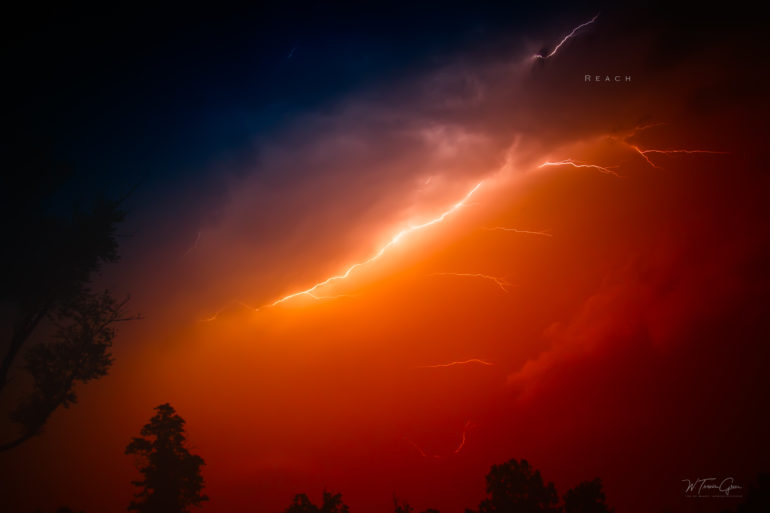
The Phoblographer: Dark, stormy, lonely. Almost like a recipe for a classic mystery novel of sorts. What’s the deeper meaning behind the lightning photos?
Travis Greer: Indeed. The ten years span I shot these photos was a decade of challenges. The images became a way of therapy to overcome those emotional challenges. It was indeed the loneliest time period of my life, but also a time period that had the most growth, both emotionally and spiritually.
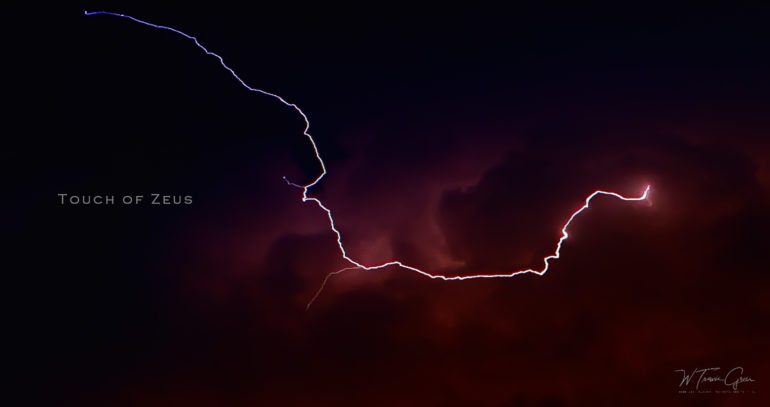
The Phoblographer: Each image has a unique caption. Do these come into your mind as you shoot on location or later on while post-processing?
Travis Greer: Pulling together image titles came to me during the post-process production of the image. Rarely did I have a caption in mind at the time of shooting the photo, but the caption typically came to me as I began color grading and was a product of whatever issue, good or bad, I was going through at the time.
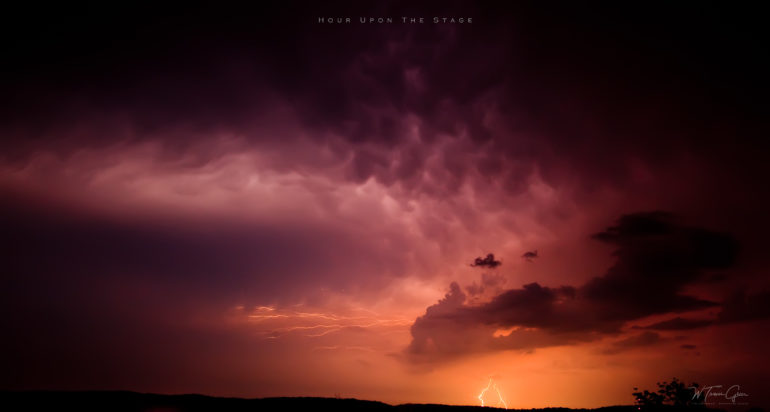
Now today, as everyone knows, there are many choices to shoot with, from your cell phone to the mirrorless DSLRs on the market. Now don’t get me wrong, as technology continues to evolve, the ability to capture those “impossible” shots in low-light environments become possible. Also, having a Cadillac of a camera in your arsenal will always assist in getting the shots and outcomes you desire, thus my decision to get the 5D Mk II back in 2008: who doesn’t want the latest shiny race car in their garage?
The Phoblographer: What sort of planning is needed for these kinds of shoots? How exciting is this portion of the shoot?
Travis Greer: As for planning a shoot to capture lightning photos, I typically have a few days to plan ahead, and sometimes, only a few minutes (I have my gear ready on the fly, so running out the front door was not unheard of at a moment’s notice). Living here in Kentucky, Spring and Fall are the two seasons where storms are most prominent. You might get a few through the summer, but those were typical pop-up storms and very unpredictable, but the best season is always in the Spring. There were a few prime spots in my local neighborhood that I would stage my shoots, my “fishing spots” where I had open fields without houses, electric lines, or light pollution to blow the shot. But the most important element, even if there was very little notice that a storm was approaching, was the time of day. For my scenes, it was important to do the shoots during the end of dusk to the dark of night. Watching weather forecasts and radar, it was important to gauge when the storm would hit. If the storm was blowing through in the early afternoon, the storm would be long gone before dusk—call that shoot a bust. However, if the storm was blowing through late evening, before dusk—winner-winner-chicken dinner—I typically walked away with a few good shots I was happy with. Keeping an eye on the radar, identifying the heavy lightning locations really helped identify the best way to plan, but you really had to be on your toes and maneuver to a different optimal spot. For the anglers who may be reading this, it’s very much like fishing. You find your best spots to fish. Sometimes one fishing hole is better to shoot at than another. And typically, the best location is southwest of a storm, as the storm has already blown over, and you’re capturing the lighting from behind it. It’s also the safest for you and your gear, but we’ve already discussed safety, and I defer to common sense and what you feel comfortable with.
Again, note to the reader: I do not advocate taking risks, and you should take precautions—which gives me pause to say the following: do NOT shoot during a tornado warning and/or thunderstorm warnings. There’s a reason why these warnings exist, but please refer to your local weather stations to help you make those decisions (as you watch your weatherman stand in the middle of a hurricane holding his umbrella telling you how windy it is as rain pelts his skin like needles…but you get my point).
As for your gear, prepare to run out the door to the location(s) of choice and be ready to change course if the radar indicates the best spot is no longer viable. Wide-angle lenses are the best. I won’t go into which one is the best because at the end of the day, any wide-angle will do and there are plenty out there to choose from—however, be sure the lens does have an infinity focus setting. It’s the camera specs that are important. These are long exposure shots. If you are setting up in a dark area, have your camera pre-set prior to you getting on location. I can’t count how many times I was able to snag the shot that was the winner as soon as my tripod hit the ground, and the camera was already prepped to snag the shot. The other reason is storms don’t last long when the sun goes down. The heat of the sun fuels these bad boys, and as soon as the sun goes down, the fuel to the storm is gone, and the lightning strikes decrease and fade to nothing. I shoot in bulb mode with a remote trigger. Be sure the tripod is stable. An important tip: remove the neck strap. Let me repeat: make sure the tripod is stable with the neck strap removed because standing in front of an incoming storm, you are going to be lambasted by wind that is going to cause camera shake. If you have a neck strap flapping around, you’ll find that all your shots are blown. I also recommend a very sturdy tripod. There are a plethora of options on the market that one can choose from.
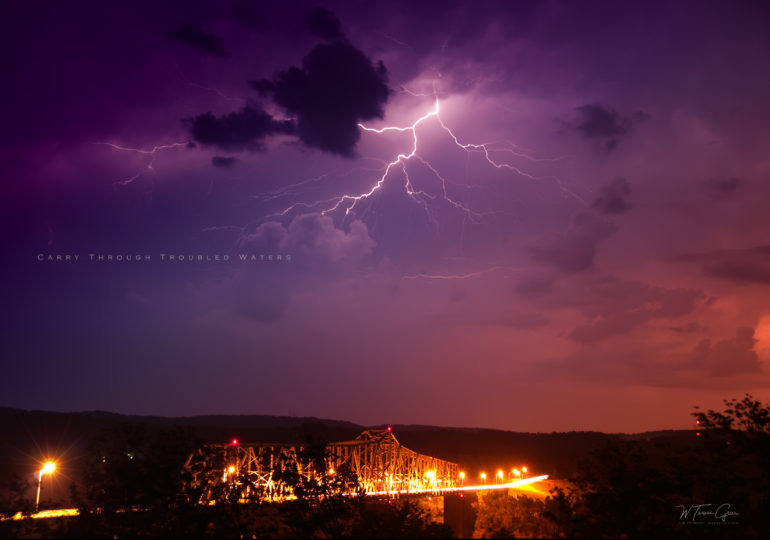
In 2008, a new Canon camera was pushed to the market, and I was chomping at the bit to add to my gear, and this beauty had to be in my arsenal. Back then, there were the two traditional camps of Nikon versus Canon. But ultimately, anyone on a budget like I was, didn’t care between the pros and cons between one or the other: it’s what you start with, and what I mean by that is—camera gear is NOT cheap. If you start with a Canon, you invest in Canon gear, and there is no turning back once you make that leap. It was after talking to my peer groups that said Canon was a solid choice; thus, I fortified my decision. I liked the shots they put out and was in awe of the shots from my peers. It was by no means because I heard Nikon was substandard. It’s just what my peers owned, and they truly had no animosity for the Nikon brand: again, it’s what they started with and made the investment with no turning back
The Phoblographer: How does it feel to witness such natural phenomena? To realize that we can only observe in wonder and have little or no control over these moments?
Travis Greer: The feeling is quite exhilarating to stand there in front of an oncoming storm or to be behind one as it has either passed over or crossing my horizon. As I stand there with my finger on an open shutter with my remote (I’ll go back to my earlier angler analogy), it’s like fishing with my line cast into the water (the horizon in this case) waiting for a nibble. Once the lightning strikes, I’ll push on the remote trigger, and I’ll jump immediately to my viewer to see the result. I’m jumping up and down like a kid at a carnival when I see the results, and I quickly reset the remote to open the shutter to snag another one. One of the biggest challenges is the resetting of composition on the horizon in the right area of the sky. There have been so many shots that were blown because I only caught a corner of the lightning streak because the center of energy moved 2 minutes prior to the previous lightning strike. As the clouds move, so should your composition. You have no control over where the lightning lands, but you do have control of the compositional space of your shot. The adage “aim small shoot small” does not apply: you should really aim at the whole of the target, and not just the smallest part. Crop and readjust your composition in post and always shoot using the highest RAW and megapixel setting on your camera.
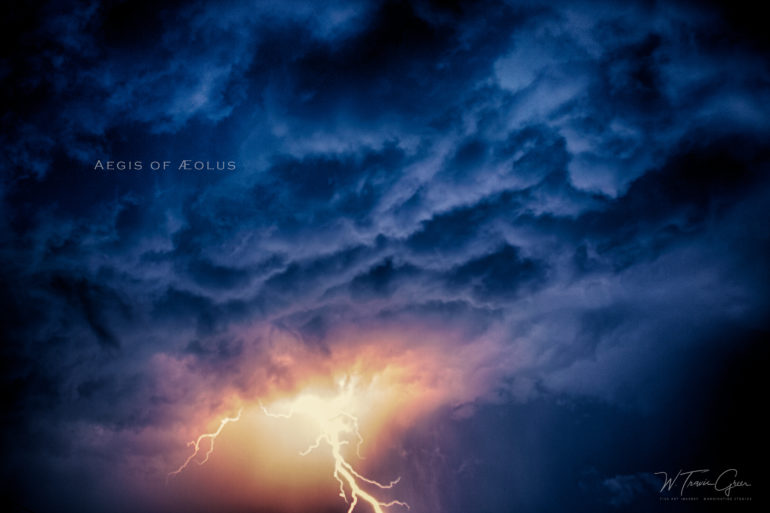
The Phoblographer: What happens on the days you return home empty-handed or without a visually striking image?
Travis Greer: On days I don’t come home without a solid shot, whether from a lack of planning or it was a very disappointing storm, I take mental notes on what I’ll do differently and try again next time. I don’t recall a time that I was extremely disappointed from a shoot. If the shoot was a bust, I typically enjoyed the moment being alone with nature and enjoyed the reprieve and sabbatical away from the day’s toils. Photography is more than just an opportunity to snag a shot. It’s opportunities to enjoy the moment, with a tool and a gift to appreciate the simplest to the most complex of subject matters. As I’ve gotten older with my tools and gifts, I’ve learned that being observant and appreciate the moments you don’t capture are just as important as the ones you do. The mental pictures and memories are an important part of being a historian of the pictures you capture. Event photography had a lot to do with that embedded perspective, especially candid moments of children’s expressions, their innocence being both happy and/or sad. I can truly say that it’s part of my DNA at this phase of my photographic journey.
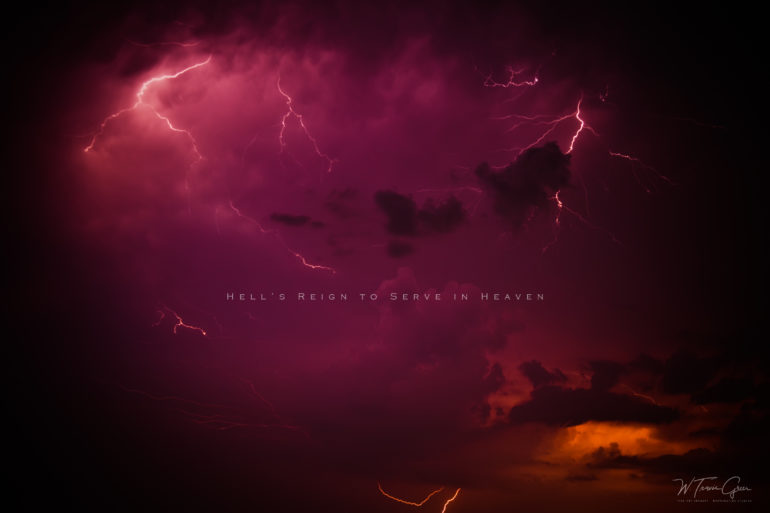
The Phoblographer: If you could change something about the way you photograph lightning, what would it be, and why?
Travis Greer: If I could change anything about the way I photograph lightning, it would be locations and stage my scenes with different foregrounds. Having the time to snag those types of shots do require more time and energy, rather than flying out the door at moments notice to head to my “fishing spots” that was either 5 to 15 minutes down the road. Staging scenes like this take time, being aware of where the storms come in and get the proper composition to make it work. You can envision the shot in your head, but at the end of the day (or night in this case), you are truly at the mercy of Mother Nature, and she always has different plans.
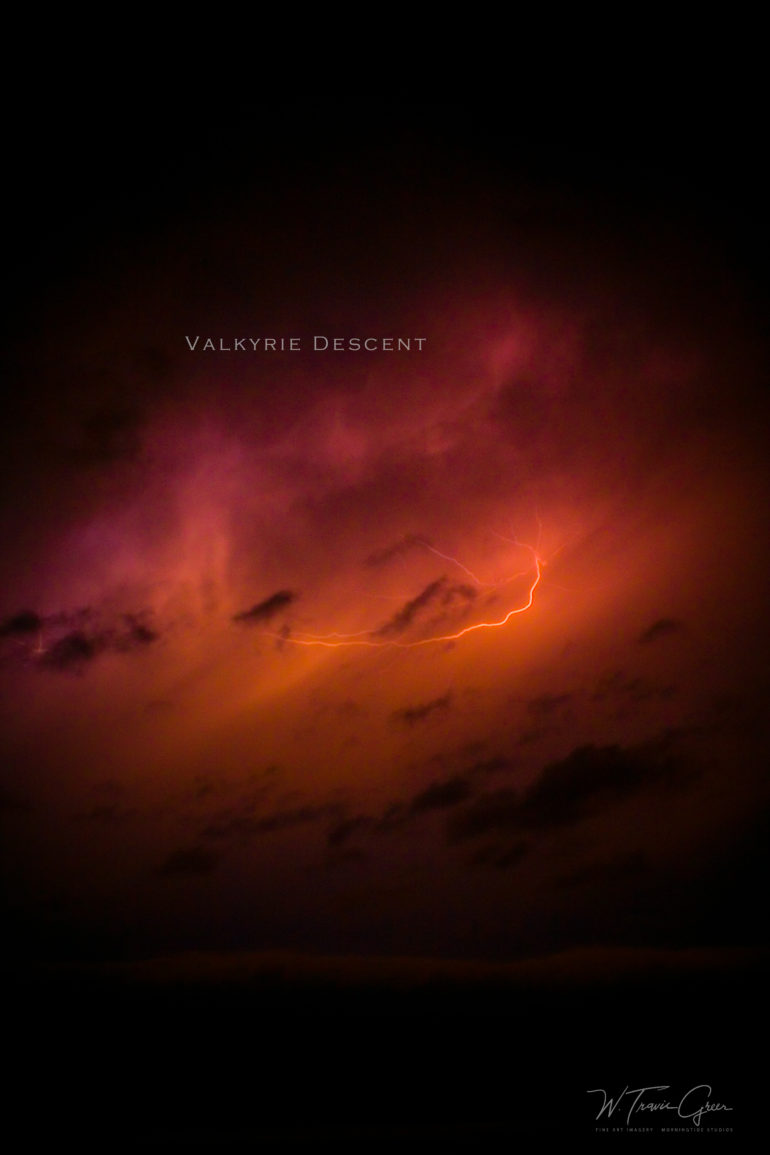
The Phoblographer: “Passion is the Genesis of Genius”. Tell us more about this quote on your website.
Travis Greer: “Passion is the Genesis of Genius” is a quote from Galileo Galilei, noted to be the “Father of Observational Astronomy, Physics, and the Scientific Method”, a genius in his own right. It’s a quote that resonated with me for many years and one I continue to strive for, to be a master of my craft. To be a true craftsman, artisan, choose whichever nomenclature suits you best; you must have passion. Passion is the energy that drives one to move forward in the direction of their thoughts and aspirations. In this case, for me, passion is what drives and compels me to capture photos and tell a story in compelling, innovative, and emotive ways that I hope that others will appreciate through my own mind’s eye. It’s a never-ending chase to improve my craft. Do I consider myself a genius? Not at all. But without passion, there is no beginning and much less an end. Ultimately, I do hope that my work is appreciated by the viewer, and they walk away with a memory of it or come back to it later to appreciate the memory of the moment again and again, and therein, is the genius.
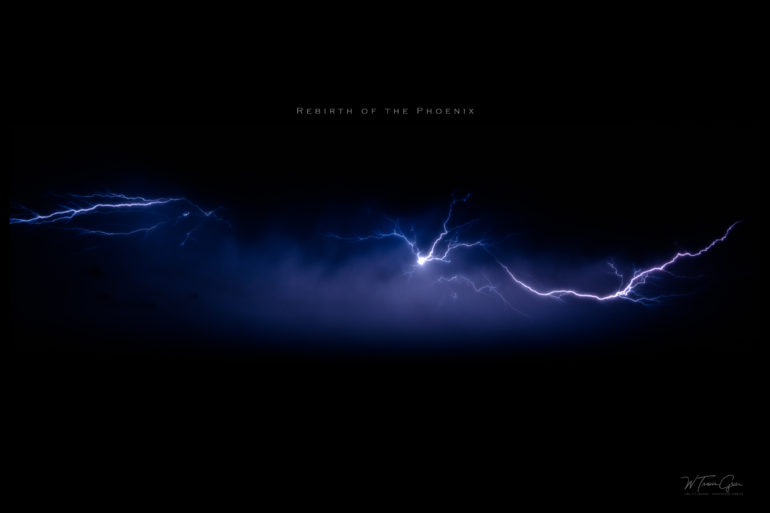
When I first began my photographic journey, one of my favorite shots to this day was shot with a point-and-click, 4-megapixel camera, shot from a photographer friend of mine, and it was from that point forward that taught me the camera isn’t as important as knowing how to use it. THAT photo was always my inspiration. From composition, sharpness, subject matter, point-of-view, lighting, it was just the “perfect” photo for me, and from that point forward, I never used the excuse, “If I only had the >insert newfangled gear here<, I would have nailed the shot.” If I didn’t get the shot, it wasn’t the camera…it was my limitation on knowing how to use the camera.
All images by Travis Greer. Used with permission. Check out his website, Facebook, Instagram and Behance pages to see more of his work.


